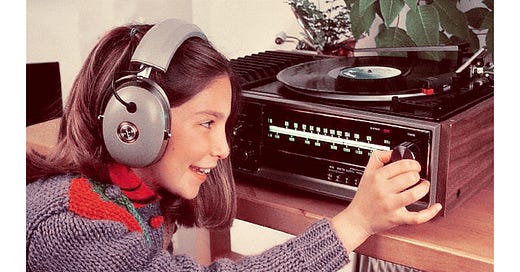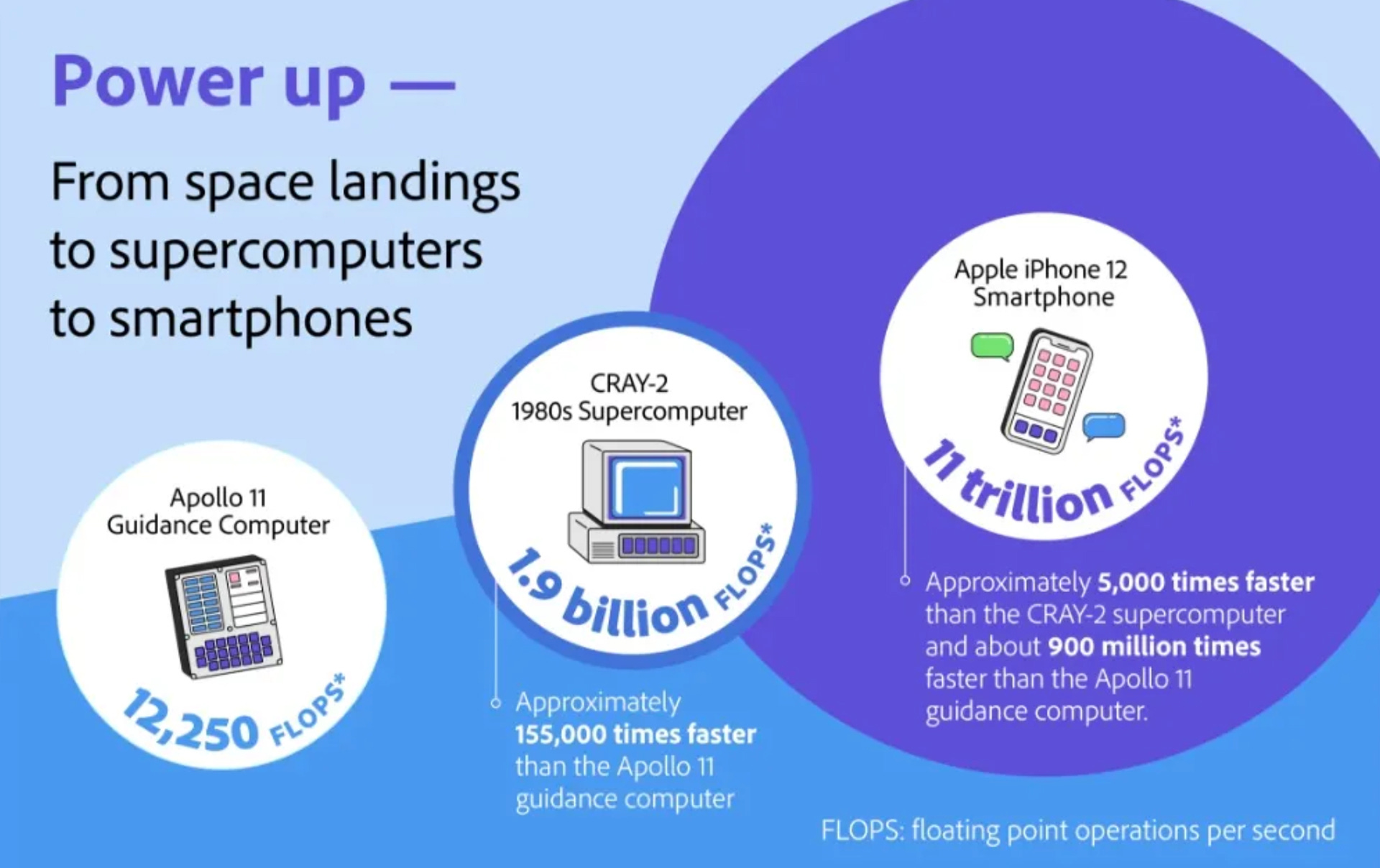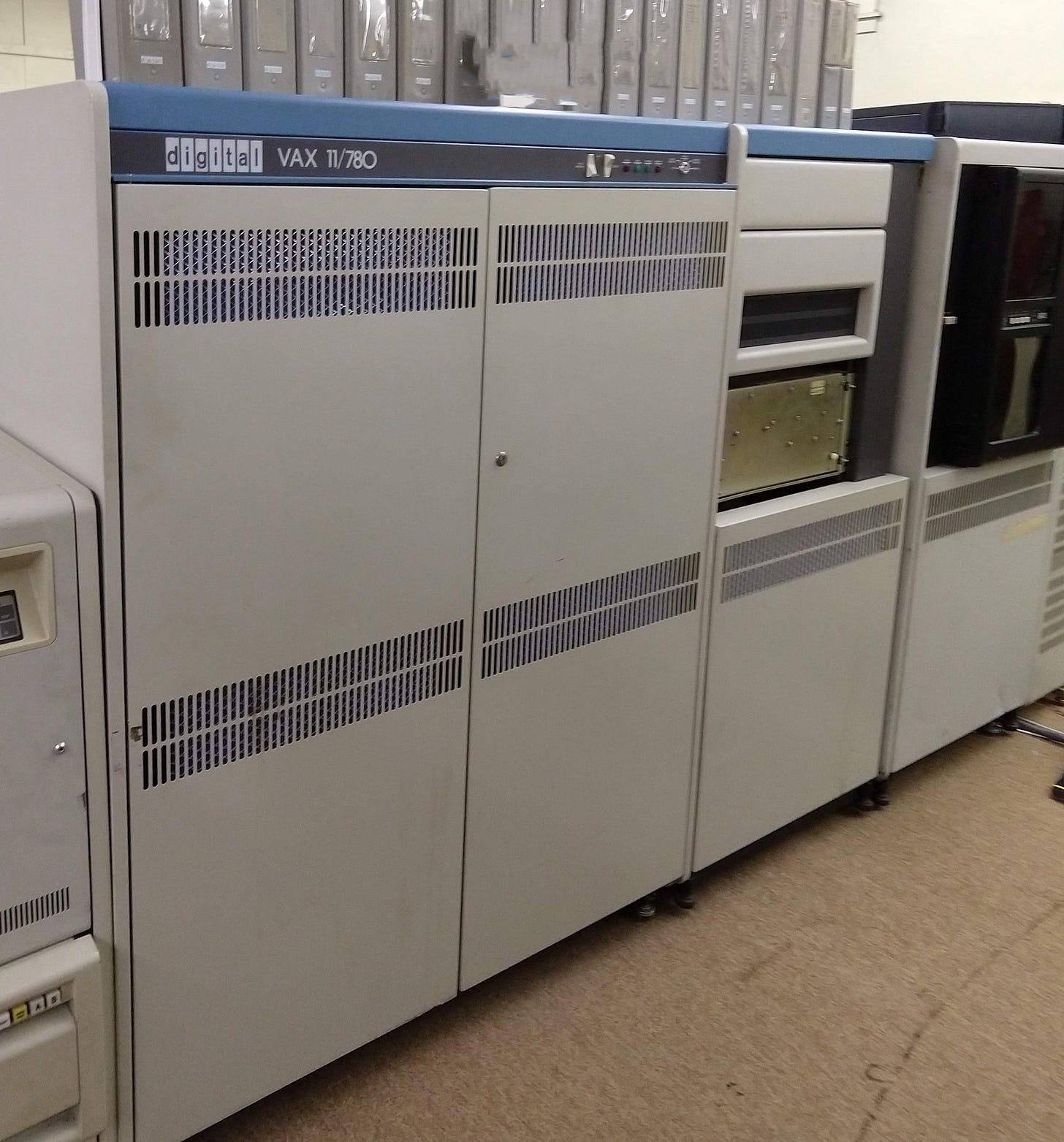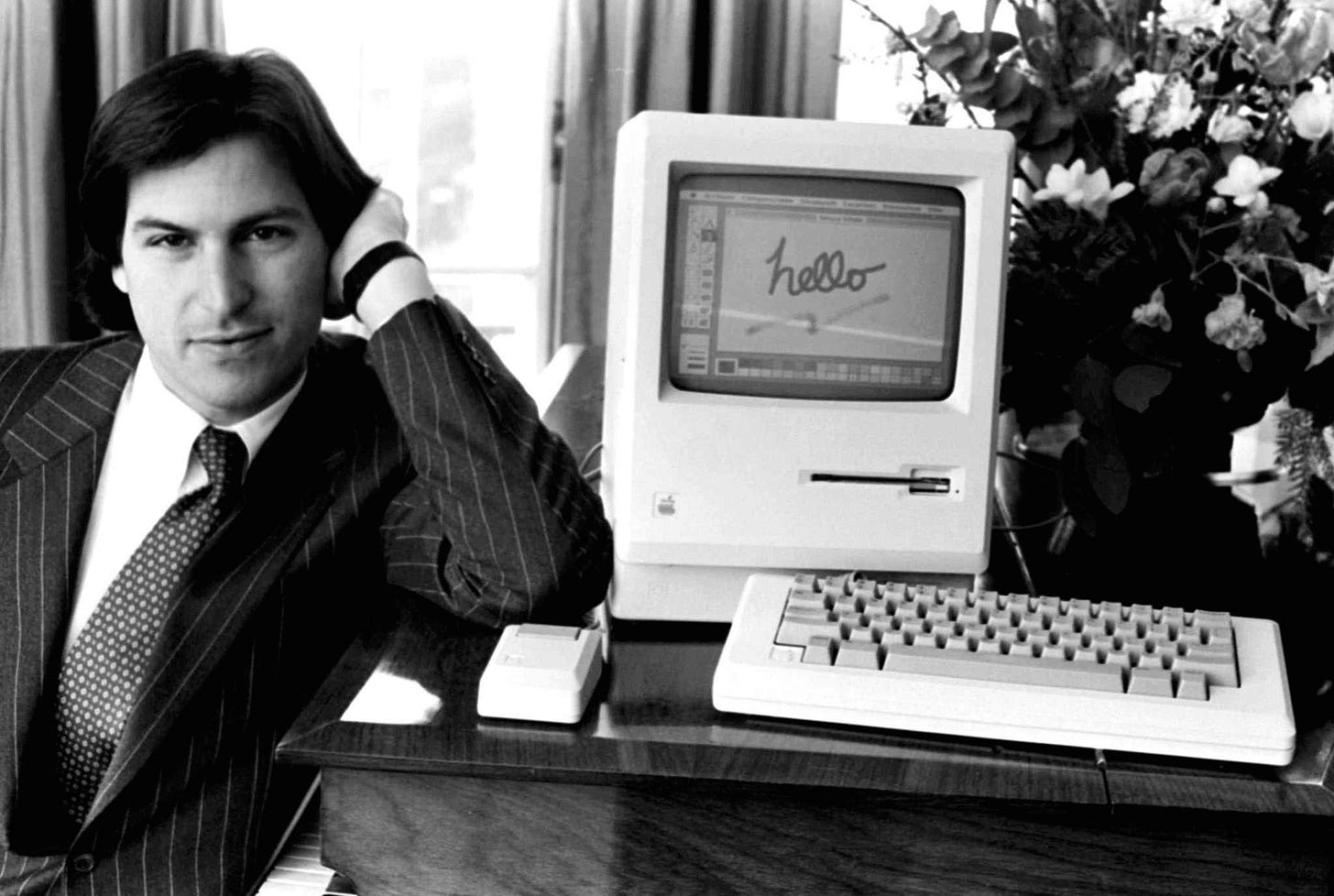TODAY'S RAMBLINGS
6 Minute Read
Happy Friday and this is the third chapter of A Tech Jones. A giant Travel Guide and now this? Sorry.
Introduction and Chapter 1: Not a Zero or a One in Sight
The World Changes
This lengthy chapter - which tells the tech story through the early 1990s - covers when shit got real. For Generation Jones and everyone else, this is when we began the move, as a society, from an analog world to one digitized.
Mainframe Computers
Starting in the 1950s, these behemoths, typically from IBM, but also long-gone Sperry-UNIVAC, Burroughs, Remington Rand, and Honeywell (among others) ushered in the computing age. Let me begin with the requisite photo of what a mainframe computer looked like in its heyday. This is IBM’s System/360, the computer that helped put a man on the moon.
But despite their size and the criticality of a mission to the moon, these things were a computing joke, compared to what now fits in our pocket. This is stunning.
The connective tissue to this Joneser is the Punched Card (well, and the moon landing in 1969). These were how computers stored data; each card might represent information about an account, a customer, or inventory.
I believe these to be the origin of an oft-heard complaint:
I’m a person, not just a number. But of course, to a computer, you are, and this was the start.
In many cases, the order by which the punched cards were fed into the computer really mattered. That’s the purpose of the red line across the top of the stack - it helped the programmer regroup if the cards were dropped and scattered.
Which was the equivalent of dropping your smartphone today.
I remember and used these as I learned about computing in my teens in the 1970s.
A layperson could be excused thinking all of this is history. And as someone who’s been professionally involved in the construction of today’s hyperscale data centers, I’d be the first to guess that mainframe computers are mostly gone by now.
Because don’t companies today either build their own data centers (Amazon/AWS, Microsoft, Meta, etc.) or rent space at one (Netflix and so many others you’d assume own their own data centers)?
No, and here are some Fun Facts regarding mainframe computers today. They’re still very much with us:
71% of Fortune 500 companies use IBM mainframe computers
92 of the top 100 banks and all top 10 insurers worldwide use IBM mainframe computers
4 out of 5 top airline companies rely on mainframe systems
Mainframes handle 90% of all credit card transactions and 68% of the world's production IT workloads
The global mainframe market was valued at approximately $2.5 billion in 2023 and is projected to grow at a CAGR of 6.4% from 2024 to 2032
One last Fun Fact and another connection to your author. Years later, Wells Fargo and Kaiser Permanente were clients of mine. And for the duration, I always bitched about how prehistoric their information technology was. But then someone explained it to me: Banks, healthcare providers, and insurance companies were logically among the first adopters of big and expensive mainframe computers.
But the huge investment required meant they wanted to (and still do) wring every last penny out of their purchase, leaving them woefully behind as the world started moving faster and faster. This cycle never really ended, and it’s why FinTech and telehealth are being driven by Square and One Medical, not Citibank and Blue Cross.
Think about that the next time you complain about your legacy bank, healthcare provider, or insurance company.
Minicomputers
I include this now mostly forgotten category because a) they were important for a time, and 2) it was on one that I was taught modern computing at the University of Colorado at Boulder starting in 1983.
The advent of minicomputers was driven by a simple fact: Companies that didn’t have the resources for an IBM mainframe still saw the benefits of computing, and wanted them. That desire brought into existence companies like Digital Equipment Corporation (DEC), Data General, and Wang.
Here’s what my alma mater had, the DEC VAX 11/780, the benchmark for the category. Note they were refrigerator-sized, vs. room-sized, and they could be combined, offering a preview of computing modularity and the ability to truly scale processing power.
Let’s take a break from the computer center and head back home. By the late 1970s, things there were starting to get interesting.
VCR
Any member of Generation Jones worth his or her weight in Bubble Yum remembers a day when:
If you missed a show on TV, that was it - it was gone
If you wished to see a movie, you went to a movie theater
Laughable now, but until the dawn of the video cassette recorder - the VCR - that was our reality. And long forgotten now, an early consumer format war also took place during this time, the VHS vs. Betamax battle. VHS won because it was cheaper, but not better.
Most would agree the prime VCR years ran from the late 1970s well into the 1990s, which meshes nicely with Gen Jones maturing from adolescence into adulthood.
Yes, exciting times, but the VCR was in reality a massive game-changer (Blockbuster, anyone?) and presaged things like on-demand streaming.
It was also one of the last gasps of analog technology in our lives.
Including mine: I built up quite a library of Alfred Hitchcock and concert movies on VHS, and it was the final analog media I owned.
Compact Discs
Compact discs - CDs - are when society went digital en masse. And while nobody could know it at the time (the first CD player was released in America in 1983), CDs (and what follows below) marked the start of the slow, painful death of things like radio and newspapers. And VCRs and Blockbuster, too, because soon, we’d have DVDs and the original Netflix, but I am getting ahead of myself.
For the record, I bought my first CD player in 1986 and like many, this was my first disc. Because - as it was emphasized at the time - it was all digital!
So it had to be better, right? Maybe, because here’s another Fun Fact: It was the first CD ever to sell one million copies.
Personal Computing
Purists demand the Altair 8800, TRS-80, and the original Apple II get their due as the first personal computers. While they’re technically correct, the two that broke through were IBM’s cleverly named Personal Computer and Apple’s Macintosh.
While I would not use the latter for another 10 years, I distinctly recall seeing and using my first of the former, a dual 5.25” floppy disc model (no hard drive) at the University of Colorado in 1983 (they were introduced in 1981). It looked exactly like this, and it was a big deal.
And Steve Jobs was just getting started.
The Internet
Books have been and will continue to be written on the history and impact of the Internet. So I won’t bother to go too deep, other than to provide some background and tie it together with - shocker - a brief story.
Today’s Internet was created via funding from the U.S. government, for connecting the research universities that supported its weapons labs. This is the original Internet, connecting Stanford, UCLA, the University of California Santa Barbara, and the University of Utah.
By 1971, 15 sites were connected. It exploded from there, and eventually, the public got connected. The sketch above and this are from Wikipedia:
In mid-1989, MCI Mail and CompuServe established connections to the Internet, delivering email and public access products to the half-million users of the Internet.
The public Internet grew from that to what we have today.
I can’t express how vividly I remember first being connected to the real, live Internet. It was on an Apple Macintosh, and it was 1994, and we had just gotten broadband (vs. dial-up) Internet services at our office. There were already websites up and operating around the world, and it was becoming apparent a radically changing world in terms of communication, commerce, and entertainment was upon us.
Well, apparent to some of us.
Because on that Macintosh, I brought up on its monochrome monitor a website in Europe in an attempt to explain the Internet and the burgeoning World Wide Web to my mother, 67 years old at the time and a member of the Greatest Generation.
She had no idea what the fuck I was talking about.
Next: Reach Out and Touch Someone
FROM THE UNWASHED MASSES
I am glad I recently skewered golf’s misguided attempt at remaining relevant, TGL. I watched its premiere this past Tuesday night and found it comically bad.
But it might be generational, and who would know better than the Chicago country club fixture and lifelong friend Steven Simon?
We like and respect GOLF. So all of this noise is just appeasement.
(But) I wonder if age or longevity plays a role. I like to think that if I were younger, I would still have the same attitude. But we grew up in a different time.
Thank you for reading this newsletter. And have a great weekend.
KLUF
From my lookalike Sting, here is his Diamond Certified debut solo album from 1985, likely my 2nd or 3rd CD.
Woo boy, did I think I was sophisticated playing this back in the mid 80s!
















Wow Portico, bringing back some memories here. I worked on the System/370 at the start of my (not so) illustrious career and reached the heady heights of shift supervisor which meant being in sole charge of the master console on a shift of 6 operators. The accompanying mountable 3330 disks did wonder for my biceps too! My only problem with “A Tech Jones” is the footnote and your claim to be Sting’s double. Whaaat?? Really?